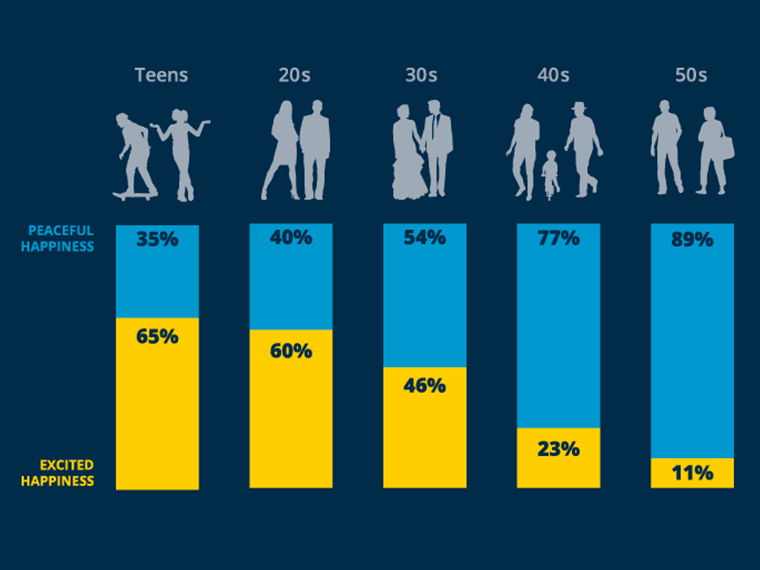Peer ranking might cut dangerous antibiotic overuse
Here’s a message from the boss you’d likely remember for a long time, even if it arrived as a routine and private email: “You are not a top performer.” For most conscientious professionals, “You are a top performer” would be memorable, too.
Some background: The power of emailed nomenclature such as this was highlighted last year in a Journal of the American Medical Association study about inappropriate antibiotic prescriptions, a chronic public health issue experts have struggled to contain. In the experiment, doctors all but stopped writing antibiotic prescriptions for illnesses that didn’t require them after emails tagged them as top (or not top) performers in the fight.
The findings come from a team of seven researchers made up of medical doctors, social psychologists and behavioral economists, including UCLA Anderson’s Craig Fox and Noah Goldstein. The team has published numerous studies in JAMA and elsewhere on strategies for reducing antibiotic overprescribing in primary care clinics.
Opt In to the Review Monthly Email Update.
Now, follow-up data show that these messages stuck. Recipients maintained improved prescribing practices in the year after the emails stopped, even as colleagues who improved under other interventions reverted in greater numbers to old habits. Other strategies cut rates of inappropriate prescriptions temporarily, but their effects faded before the year was up, as summarized by the authors in the October 10 Research Letter in JAMA.
The findings are the team’s latest in a series of studies seeking to reduce antibiotic overuse in primary care facilities, a chronic problem that contributes to millions of illnesses and deaths every year, according to the Centers for Disease Control and Prevention. Antibiotics taken for nonbacterial infections, such as most acute respiratory illnesses, provide no benefits to patients. But they can cause serious side effects, and overuse enables the rise of deadly, antibiotic-resistant infections, according to the CDC. About half of antibiotic prescriptions from U.S. outpatient clinics are unnecessary, the agency estimates.
Fox and colleagues look for low-touch behavioral interventions, or “nudges,” that push individual doctors, nurses and other prescribers to back off from antibiotic use. With experiments based in behavioral economics and social psychology, their strategies recognize that the human need for social approval often trumps rational decision making, even among highly educated individuals.
The team has documented, in JAMA studies and elsewhere, strategies that help the cause. Poster-sized letters committing a clinic to responsible antibiotic stewardship and featuring clinician photos and signatures reduced the problem by about 20 percent, according to one of their early studies. Popping up alternatives to antibiotics on the electronic records screen as doctors were making a record of the patient visit also cut down overuse. Requiring the doctor to write an explanation for a diagnosis-inappropriate prescription had promising effects.
But nothing worked nearly as well, or for as long, as the emailed rankings.
You Are Writing Too Many Unnecessary Prescriptions
In the 2016 JAMA paper, the team studied the prescribing habits of 248 clinicians (such as doctors and nurse practitioners) at 47 primary care practices in Los Angeles and Boston. They focused on antibiotic prescription rates across 17,000 cases in which the clinician diagnosed acute respiratory illness, which does not warrant antibiotics. For the first 18 months, the researchers simply tracked prescribing habits. Then, between November 1, 2011, and October 1, 2012, they employed several intervention strategies and continued to document.
In the “peer comparison” experiment, each clinician received a monthly tally of his unwarranted antibiotic prescriptions. Those with the lowest rates of inappropriate prescriptions were congratulated for being top performers. Those with higher rates were told, “You are writing too many unnecessary prescriptions” and “You are not a top performer.” They were shown their rates of inappropriate prescribing against the typical rate for a top performer in the practice. They were given a link to prescribing guidelines and asked to review.
Inappropriate prescribing in the peer comparison experiment dropped from 19.9 percent to 3.7 percent by the end of the original study. Moreover, the ranking strategy appears to have ingrained better habits in a way that other efforts didn’t, according to follow-up results.
A year after the emails stopped, the peer comparison clinicians were the only professionals to maintain a statistically significant difference in inappropriate prescribing rates from the control group, according to the latest findings. The group’s rate of inappropriate antibiotic prescriptions went from 19.9 percent before any intervention to 3.7 percent when the interventions were stopped. In the follow-up study for the year after ratings ended, their rates of poor prescribing ticked up to 6.3 percent from 4.8 percent. (Rates are different at the end of the original study and beginning of the follow-up because some clinicians did not participate in the latter.)
Notably, the clinicians did not appear to change their diagnoses during the experiment in order to justify antibiotic prescriptions, according to the researchers. They simply wrote fewer antibiotic prescriptions.
The Power of a Gold Star
Seemingly obvious approaches for changing clinicians’ prescribing habits have not solved the problem of antibiotics overuse. Educating doctors on antibiotic protocols isn’t particularly helpful, UCLA Anderson’s Fox explains in an interview, because they already know the protocols. Pop-up reminders of antibiotic prescribing guidelines are considered annoyances for the same reason, and clinicians tend to click right through them. Prescribers haven’t responded to monetary incentives.
The problem with each of these interventions is that they assume that physicians are self-interested rational agents. But in human behavior, social motivations often override rationality, Fox explains. Moreover, clinicians’ reasons for overprescribing are likely to be social, rather than a belief that the antibiotic is needed, he says. Maybe the doctor wants to placate a patient who might otherwise complain to the doctor’s supervisor or give him a bad review online. Or maybe he fears making a decision that will be exposed as wrong if the patient returns.
“In my experience, doctors are human and kind of a competitive lot, and they respond to social interventions,” says Fox. Like everyone else, he says, doctors want to fit in with their peers.
Fox believes this desire for collegial acceptance drives the positive results from the peer comparison intervention. While a doctor might see his own inappropriate prescriptions as insignificant, the emails put his actions into perspective with colleagues in a unified fight against over-prescribing.
Many experiments in the field, such as nudges that encourage retirement savings, seek to sway behavior. Fox’s team has found a niche studying nudges aimed at health care professionals.
He suspects the “top performer” messages were more effective at maintaining behavior after the intervention terminated compared to the negative “not a top performer” tags. He can imagine the lowest performers being irritated by the study rather than staying on board with the goals. But once a professional identifies as a top performer, Fox says, he will strive to hold on to that title.
“Wanting the gold star doesn’t end when you are in preschool,” he says. “Once you start thinking about yourself as a top performer, that doesn’t change after you stop being told you are one.” The team is still analyzing data to determine the extent to which positive versus negative messages drove their results.
Peer acceptance also played a role in the written accountability strategy, Fox says. Requiring a doctor to write a justification when he wanted to bypass clinical prescribing guidelines signaled he might be doing something his colleagues wouldn’t, Fox says. Moreover, he says, a weak justification would be visible to colleagues, remaining a permanent part of the patient’s electronic medical record.
Written justifications significantly cut inappropriate prescribing during the experiment — to 5.2 percent from 23.2 percent — but rates for clinicians using this invention jumped to 10.2 percent a year after the requirement was dropped. Fox suspects that the “top performer” tag became an integral part of the clinician’s self-image that persisted long after the labeling stopped. In contrast, the written justifications merely acted as speed bumps in the clinician’s work flow and a source of potential embarrassment that lasted only as long as the requirement to complete them was in place.
A third intervention strategy used electronic medical records to suggest alternatives each time a clinician prescribed antibiotics inappropriately. This strategy initially reduced inappropriate prescribing to 6.1 percent from 22.1 percent, but the rate crept up to 8.8 percent after a year without the prompts, according to the findings.
Even Science Majors Act Irrationally
Recently, there has been “an explosion of interest” in applying behavioral economics and social psychology to helping individuals make better decisions, Fox says. In October, University of Chicago Economist Richard Thaler won a Nobel Prize for economics for his work in the field.
Many experiments in the field, such as nudges that encourage retirement savings, seek to sway behavior of individuals in the general public. Fox’s team has found a niche — potentially a very productive one — studying nudges aimed at health care professionals. Fox points out that changing the habits of any one of these clinicians affects many patients, not just the individual professional.
The research team, which includes three medical doctors, came together in 2010 with a National Institutes of Health grant to look at the antibiotics issue. In addition to Fox and Goldstein, the members are: Jeffrey Linder and Stephen Persell of Northwestern University Feinberg School of Medicine; Daniella Meeker and Jason Doctor of University of Southern California; and Mark Friedberg of RAND Corporation.
The team’s early work found that doctors’ propensities to prescribe antibiotics rose toward the end of a four-hour shift, suggesting that fatigue may lead more doctors to take the “path of least resistance” by prescribing antibiotics that patients demand, even if this is contrary to prescribing guidelines. The team also determined that the way alternatives to antibiotics appeared on a screen was important; doctors were likelier to prescribe specific medications when they were listed individually. Grouping them among a set of related medications (e.g., various antibiotics) horizontally instead of listing each of them vertically reduced their use.
After seven years together, the team will use their insights to tackle a variety of public health issues beyond antibiotic overprescribing. In July, the NationalInstitute on Aging awarded the team grants for four new research projects to address separately: opioid addiction, overuse of medical tests in the elderly, prescription overload and misuse in seniors, and the quality of emergency room treatment.
Although the details of these new studies are developing, they will focus more on biases in judgment and decision making and on social cues as incentive for change than they will on tactics that appeal to clinicians’ highly evolved analytical reasoning skills. People, even highly trained professionals, cannot be expected to make the most logical decisions in every case, Fox says. “People systematically fall short of those Olympian standards of rationality.”
Featured Faculty
-
Craig Fox
Harold Williams Chair and Professor of Management
-
Noah J. Goldstein
Bing (’86) and Alice Liu Yang Endowed Term Chair in Teaching Excellence; Professor of Management and Organizations; Faculty Advisor, Equity, Diversity and Inclusion
About the Research
Linder, J.A., Meeker, D., Fox, C.R., Friedberg, M.W., Persell, S.D., Goldstein, N.J., & Doctor, J.N. (2017). Effects of behavioral interventions on inappropriate antibiotic prescribing in primary care 12 months after stopping interventions. JAMA, 318(14), 1391–1392. doi:10.1001/jama.2017.11152
Meeker, D., Linder, J.A., Fox, C.R., Friedberg, M.W., Persell, S.D., Goldstein, N.J., Knight, T.K., Hay, J.W., & Doctor, J.N. (2016). Effect of behavioral interventions on inappropriate antibiotic prescribing among primary care practices: A randomized clinical trial. JAMA, 315(6), 562–570. doi:10.1001/jama.2016.0275
Tannenbaum, D., Doctor, J.N., Persell, S.D., Friedberg, M.W., Meeker, D., Friesema, E.M., Goldstein, N.J., Linder, J.A., & Fox, C.R. (2015). Nudging physician prescription decisions by partitioning the order set: Results of a vignette-based study. Journal of General Internal Medicine, 30(3), 298–304. doi:10.1007/s11606-014-3051-2
Linder, J.A., Doctor, J.N., Friedberg, M.W., Nieva, H.R., Birks, C., Meeker, D., & Fox, C.R. (2014). Time of day and the decision to prescribe antibiotics. JAMA Internal Medicine, 174(12), 2029–2031. doi:10.1001/jamainternmed.2014.5225
Meeker, D., Knight, T.K., Friedberg, M.W., Linder, J.A., Goldstein, N.J., Fox, C.R., Rothfeld, A., Diaz, G., & Doctor, J.N. (2014). Nudging guideline-concordant antibiotic prescribing: A randomized clinical trial. JAMA Internal Medicine, 174(3), 425–431. doi:10.1001/jamainternmed.2013.14191
Persell, S.D., Friedberg, M.W., Meeker, D., Linder, J.A., Fox, C.R., Goldstein, N.J., Shah, P.D., Knight, T.K., & Doctor, J.N. (2013). Use of behavioral economics and social psychology to improve treatment of acute respiratory infections: Rationale and design of a cluster.






